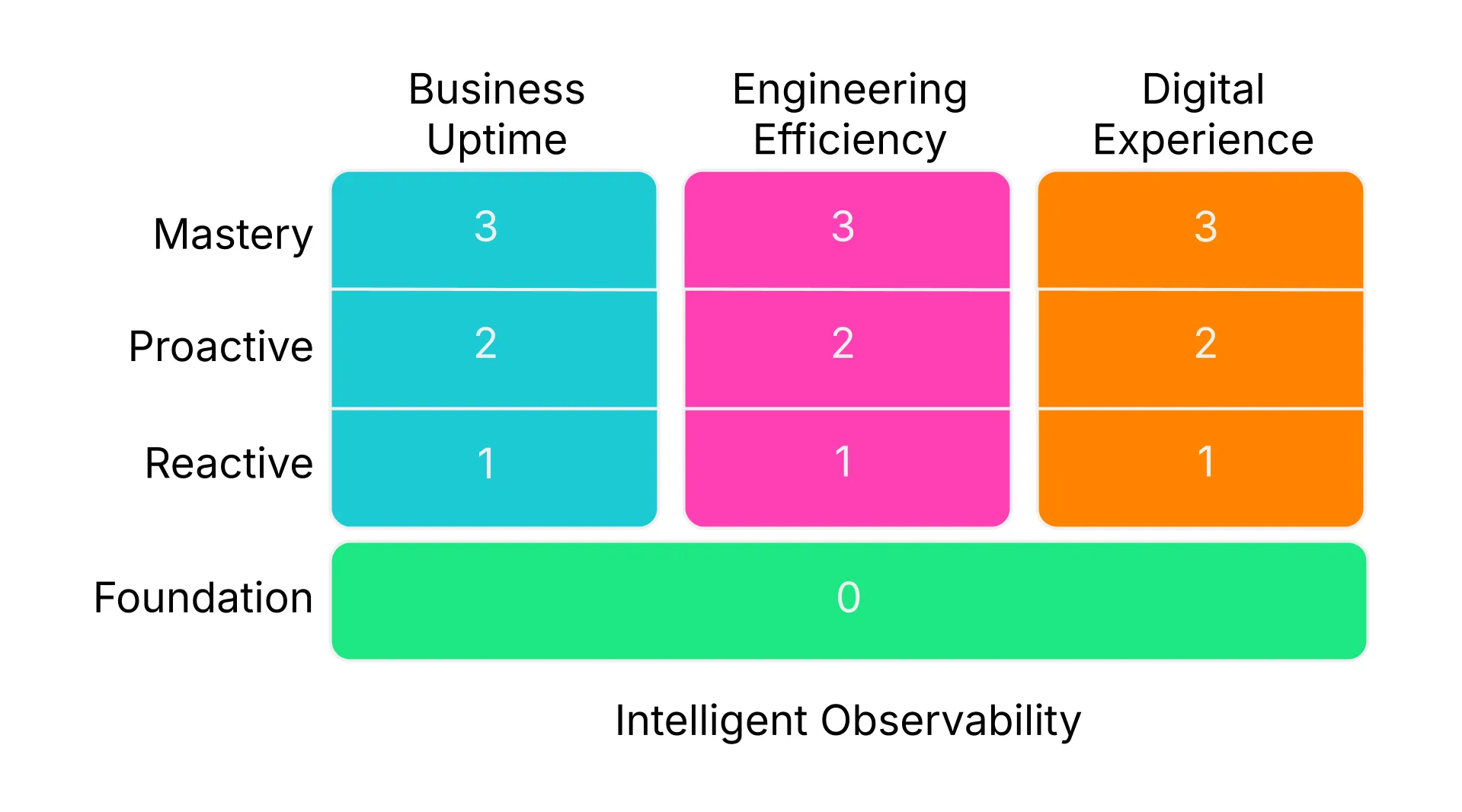You've successfully ingested data into New Relic, created visualizations, managed logs, and fixed application errors. Now what? How do you bring everything together to maximize the value of your observability investment?
New Relic's Observability maturity practices provide a structured approach to transform your telemetry data into measurable business value. These practices help you optimize four key value drivers that directly impact your organization's success.

About observability maturity
Observability maturity helps you succeed across one or more of the value drivers shown above. Our approach identifies common customer challenges, provides clear guidance, and defines actionable paths to meet your specific goals.
Each practice includes:
- Implementation guides with defined KPIs to measure and improve
- Reference documentation explaining industry concepts and improvement strategies
- Step-by-step tutorials for implementing specific practices
Your observability journey is unique to your organization's needs. While the progression outlined here represents a typical path, you can adapt it based on your priorities and current maturity level.
Intelligent observability
Intelligent observability provides the logical starting point for your observability journey. These practices establish deployment and organizational foundations that make subsequent investments in observability value drivers more effective.
Core practices
- Service characterization (SC): Capture the right web telemetry to resolve poor customer experiences
- Data ingest governance (DG): Ensure overall value for the telemetry data you collect with New Relic
- Observability as code (OaC): Automate the configuration of your tools for consistency and value
Business uptime
Business uptime focuses on improving system reliability. To optimize your observability practice, you need a strong understanding of your system's performance and baseline behavior.
Core practices
- Alert quality management (AQM): Manage the volume and usefulness of your alerts
- Service level management (SLM): Translate your data into language that all stakeholders can understand
- Reliability engineering diagnostics (RED): Diagnose customer-impacting issues more reliably
- Error tracking optimization: Improve your error rates, error detection, and overall customer experience
- Observability Center of Excellence (OCoE): Create a team within your organization that focuses on observability best practices
Training and labs
Digital experience
Digital experience focuses on improving and optimizing your end user experiences to drive better customer satisfaction and business outcomes.
Core practices
- Quality foundation (QF): Measure and improve the performance of your customers' digital experience
- Bottom-of-the-funnel analysis (BotFA): Improve your conversions by focusing on the end of user journey performance
Reference documentation
Engineering efficiency
Engineering efficiency establishes processes to ensure you're consistently improving your observability practices and development workflows.
Core practices
- Development quality: Improve the quality of your code base
- Release quality: Improve the quality of your releases
Getting started
Choose your starting point based on your organization's current needs and maturity level:
- New to observability: Start with Intelligent observability to establish foundations
- Reliability focus: Begin with Business uptime practices to improve system reliability
- Customer experience focus: Start with Digital experience to optimize user outcomes
- Development process focus: Begin with Engineering efficiency to improve development workflows
Each practice builds upon fundamental observability concepts, so you can start anywhere and expand based on your priorities and business objectives.